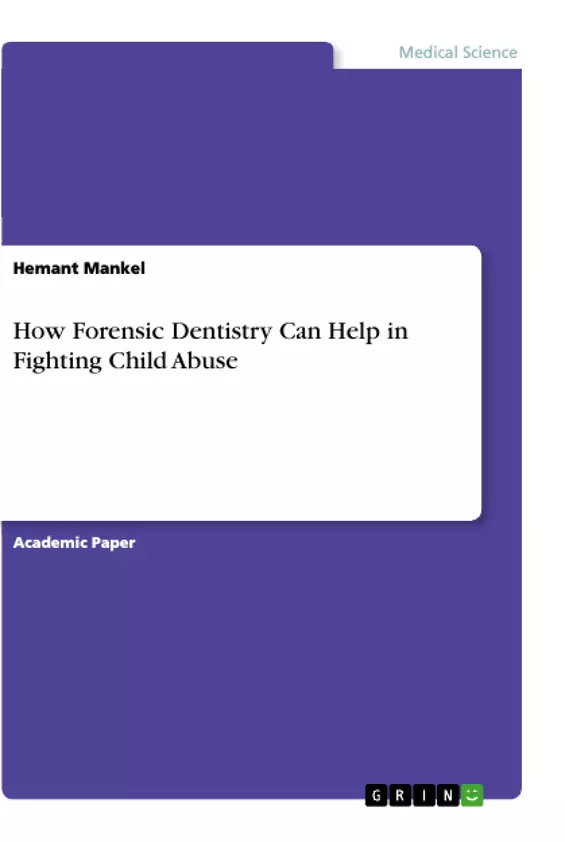This work analysis how dentists can help detecting child abuse since most of the abuse injuries occur in the head and neck. As a oral care professional it is their duty to detect such abuses at an early stage to prevent further harm to the child and counseling of abusive caretaker. Reported cases of child abuse and corporal punishment, both new and under management and treatment, require continual monitoring.
The involvement of dentists in child protection teams would be beneficial in two ways: Dentists would become aware of their role and would assist in the training of physicians and other professionals. In turn, non-dental practitioners would benefit from consultations with dentists in the evaluation of physical and sexual abuse or neglect, especially those dentists who have experience or expertise with children.
Child abuse and neglect issues are common in almost all countries at the global level such as physical abuse, sexual abuse, emotional and psychological abuse, abandonment and increasingly, problems of street children. Child abuse and the harsh corporal punishment of children have been historically documented through the ages, the presently recognized magnitude of the problem and the increased awareness among the medical and paramedical sciences, law enforcement agencies and judicial system have fostered recent efforts to correct this blight upon our modern civilized societies.
Inhaltsverzeichnis (Table of Contents)
- Introduction
- Historical Background and Incidence
- Child Abuse in India
- Etiology
- Child Abuse Types & Prevention
- Consulsion
- Bibliography
Zielsetzung und Themenschwerpunkte (Objectives and Key Themes)
This book aims to provide a comprehensive overview of child abuse and its impact, particularly focusing on the role of forensic odontology in identifying and addressing cases. It explores the historical context of child abuse, its prevalence in India, and the various types of abuse, including physical, emotional, and sexual abuse.
- Historical context of child abuse
- Prevalence and types of child abuse
- Role of forensic odontology in identifying and addressing child abuse
- Ethical and legal considerations related to child abuse
- Prevention and intervention strategies for child abuse
Zusammenfassung der Kapitel (Chapter Summaries)
- Introduction: This chapter provides a general introduction to the topic of child abuse, defining key terms and outlining the scope of the book. It emphasizes the importance of understanding child abuse and its impact on society.
- Historical Background and Incidence: This chapter delves into the historical context of child abuse, tracing its prevalence across different civilizations and eras. It examines the societal norms and practices that contributed to the incidence of child abuse throughout history.
- Child Abuse in India: This chapter focuses on the specific challenges and complexities of child abuse in India. It discusses the prevalence of different forms of abuse in the Indian context, highlighting the social, cultural, and economic factors that contribute to the problem.
- Etiology: This chapter explores the underlying causes of child abuse, examining the psychological, sociological, and biological factors that can lead to abusive behaviors. It investigates the potential risk factors and the dynamics that contribute to the perpetration of abuse.
- Child Abuse Types & Prevention: This chapter delves into the various types of child abuse, providing detailed descriptions of physical, emotional, sexual, and neglectful abuse. It also explores the different forms of prevention and intervention strategies that are employed to protect children from abuse.
Schlüsselwörter (Keywords)
Child abuse, forensic odontology, dental evidence, historical context, prevalence, types of abuse, etiology, prevention, intervention, India, legal implications, ethical considerations.
- Arbeit zitieren
- Dr. Hemant Mankel (Autor:in), 2019, How Forensic Dentistry Can Help in Fighting Child Abuse, München, GRIN Verlag, https://www.hausarbeiten.de/document/503025


